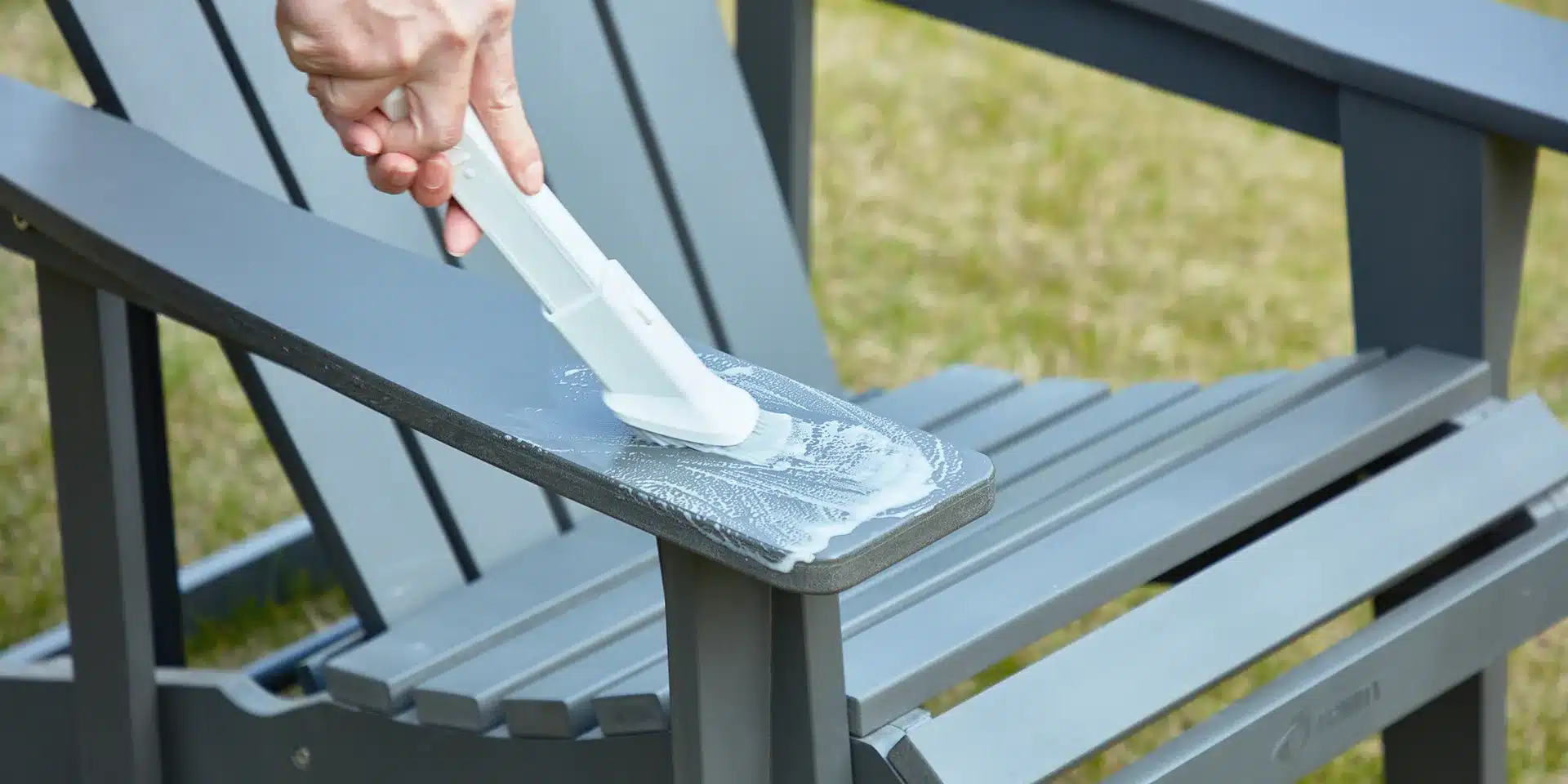When it comes to furnishing our living spaces, the choices we make can significantly impact the aesthetics, comfort, and functionality of our environments.
Both indoor and outdoor furniture play crucial roles in creating inviting spaces, but they differ in various ways due to their distinct purposes and the conditions they face. Understanding these differences can help you make informed decisions when selecting furniture for your home or outdoor areas.
Read on to learn more about the differences between outdoor furniture and indoor furniture in 7 aspects.
1. Purpose and Usage
Indoor Furniture
Indoor furniture is primarily designed for comfort and aesthetics within the controlled environment of a home or office. Pieces like sofas, beds, dining tables, and chairs are crafted to provide maximum comfort and complement the interior décor. The main purpose of indoor furniture is to create a cozy, functional, and visually appealing living space.

- Comfort and Design: Indoor furniture prioritizes comfort and design. Sofas, for instance, are upholstered with plush materials like leather, velvet, or high-thread-count fabrics to ensure a comfortable seating experience. Beds are designed with soft mattresses and cushioned headboards to promote restful sleep.
- Aesthetic Variety: Indoor furniture offers a wide range of styles, colors, and materials. From modern minimalist designs to classic antique pieces, the options are vast, allowing homeowners to express their personal style.
- Functionality: Indoor furniture often includes multifunctional pieces, such as sofa beds, extendable dining tables, and storage ottomans, to maximize space and functionality within the home.
Outdoor Furniture
what is outdoor furniture? Outdoor furniture is designed to withstand the elements while providing comfort and style for outdoor living spaces. This includes patios, gardens, balconies, and poolside areas. Outdoor furniture must be durable, weather-resistant, and easy to maintain.

- Durability and Weather Resistance: Outdoor furniture is built to endure exposure to sunlight, rain, wind, and varying temperatures. Materials like teak, aluminum, and synthetic wicker are commonly used due to their resilience and longevity.
- Practical Design: While comfort is still a consideration, outdoor furniture designs focus on practicality. Cushions and fabrics used in outdoor furniture are typically weatherproof, mold-resistant, and easy to clean.
- Versatility: Outdoor furniture often includes modular pieces that can be rearranged to suit different occasions. This flexibility is ideal for hosting gatherings or simply enjoying a quiet evening outdoors.
2. Material Differences
Indoor Furniture Materials
The materials used in indoor furniture are selected for their comfort, aesthetics, and suitability for indoor environments.
- Wood: Commonly used for its natural beauty and strength. Types of wood used include oak, cherry, walnut, and mahogany. Wood furniture is often finished with varnish or paint to enhance its appearance and protect it from minor damage.
- Upholstery: Fabric, leather, and synthetic materials are used for sofas, chairs, and beds. These materials are chosen for their comfort, texture, and visual appeal.
- Metal and Glass: Often used in modern and contemporary furniture designs. Metal frames provide a sleek, sturdy structure, while glass tops add a touch of elegance.

Outdoor Furniture Materials
Outdoor furniture materials are selected for their ability to withstand harsh weather conditions without compromising on durability or appearance.
- Teak: A popular choice for outdoor furniture due to its natural resistance to water, insects, and rot. Teak ages gracefully, developing a silvery patina over time.
- Aluminum: Lightweight, rust-resistant, and durable. Aluminum furniture is often powder-coated to enhance its weather resistance and come in various colors and styles.
- Synthetic Wicker: Made from polyethylene or resin, synthetic wicker mimics the look of natural wicker but is much more durable and weather-resistant. It requires minimal maintenance and is available in a range of styles and colors.
- Plastic and Polywood: These materials are highly durable, easy to clean, and resistant to moisture and UV rays. They are also environmentally friendly, as some are made from recycled materials.
3. Maintenance and Care
Indoor Furniture Maintenance
Indoor furniture maintenance focuses on preserving appearance and comfort. Regular dusting, vacuuming, and occasional deep cleaning are typically sufficient.
- Upholstered Furniture: Regular vacuuming and spot cleaning can keep fabric and leather upholstery looking fresh. Professional cleaning may be necessary for stubborn stains or deep cleaning.
- Wood Furniture: Dusting with a soft cloth and using furniture polish can maintain the wood’s shine and protect it from scratches. Avoiding direct sunlight can prevent fading and warping.
- Metal and Glass: Wiping down with a damp cloth and using glass cleaner on tabletops can keep these materials looking pristine.
Outdoor Furniture Maintenance
Outdoor furniture requires more rigorous maintenance due to exposure to the elements. Regular cleaning and protective measures can extend the life of outdoor pieces.
- Teak and Wood Furniture: Cleaning with mild soap and water, and applying teak oil or sealant can preserve the wood’s appearance and longevity. Covering or storing wood furniture during extreme weather can prevent damage.
- Aluminum and Metal Furniture: Cleaning with a mild detergent and water, and occasionally checking for signs of rust can keep metal furniture in good condition. Applying a protective coating can enhance rust resistance.
- Synthetic Wicker and Plastic: These materials are low-maintenance, requiring only occasional cleaning with soap and water. Covers or storage during harsh weather can further protect the furniture.

4. Comfort and Ergonomics
Indoor Comfort
Comfort is paramount for indoor furniture, which is designed for relaxation and extended use.
- Ergonomic Design: Many indoor furniture pieces are designed with ergonomics in mind. Office chairs, for example, are built to support the spine and reduce strain during long hours of sitting. Sofas and beds are designed to provide optimal support and comfort.
- Soft Materials: Plush cushions, padded armrests, and soft fabrics contribute to the comfort of indoor furniture. Memory foam and other advanced materials are often used in mattresses and seating to enhance comfort.

Outdoor Comfort
While outdoor furniture also focuses on comfort, it must balance this with durability and weather resistance.
- Weatherproof Cushions: Outdoor cushions are made from quick-drying foam and covered with weather-resistant fabrics like Sunbrella. These materials resist fading, mold, and mildew while providing comfort.
- Breathable Designs: Many outdoor furniture pieces are designed to allow airflow, preventing heat buildup and ensuring comfort even on hot days. Mesh fabrics and slatted designs are common.
- Adjustable Features: Outdoor furniture often includes adjustable features such as reclining chairs, extendable tables, and modular seating arrangements to enhance comfort and versatility.
5. Aesthetic and Design Considerations
Indoor Aesthetics
Indoor furniture is a key component of interior design, contributing to the overall look and feel of a space.
- Style and Theme: Indoor furniture is available in a wide range of styles, from traditional to contemporary, enabling homeowners to create cohesive and personalized spaces.
- Color and Texture: The choice of colors and textures in indoor furniture can significantly impact the ambiance of a room. Rich, warm tones can create a cozy atmosphere, while sleek, neutral colors can lend a modern, minimalist feel.
- Customization: Many indoor furniture pieces can be customized to suit individual preferences, including fabric choices, wood finishes, and design details.
Outdoor Aesthetics
Outdoor furniture must blend with the natural surroundings while offering style and functionality.
- Natural Materials: Materials like teak, wicker, and stone blend seamlessly with outdoor environments, creating a harmonious look.
- Earthy Tones and Bright Accents: Outdoor furniture often features earthy tones that complement the natural landscape. Bright cushions and accessories can add a pop of color and vibrancy.
- Integration with Landscaping: Outdoor furniture designs often consider the surrounding landscape, including gardens, patios, and pools. Coordinating furniture with the natural elements can enhance the overall aesthetic.

6. Environmental Impact
Indoor Furniture Sustainability
Sustainability is becoming increasingly important in indoor furniture design.
- Eco-friendly Materials: Many manufacturers are using sustainably sourced wood, recycled materials, and non-toxic finishes to reduce environmental impact.
- Energy-efficient Production: The production process for indoor furniture is increasingly incorporating energy-efficient practices and reducing waste.
- Longevity: High-quality indoor furniture is designed to last for many years, reducing the need for frequent replacements and minimizing waste.
Outdoor Furniture Sustainability
Sustainability is also a key consideration for outdoor furniture.
- Recycled Materials: Many outdoor furniture pieces are made from recycled plastics and other materials, reducing waste and conserving resources.
- Durability: Outdoor furniture is built to last, reducing the need for frequent replacements. High-quality materials like teak and aluminum can withstand years of use.
- Eco-friendly Treatments: Some outdoor furniture uses eco-friendly treatments and finishes that do not harm the environment.

7. Cost Considerations
Cost is an important factor when choosing furniture, and it can vary significantly between indoor and outdoor pieces due to the materials and construction methods used.
Indoor Furniture
Indoor furniture can range from affordable to high-end luxury items. The cost is influenced by factors such as the type of material, craftsmanship, brand, and design complexity. High-quality indoor furniture is often seen as an investment, with pieces designed to last for many years.
Outdoor Furniture
Outdoor furniture, while also available in a range of prices, often requires an upfront investment in durable materials and construction. High-quality outdoor pieces are designed to withstand the elements, which can make them more expensive initially but cost-effective in the long run due to their longevity.

Final Thoughts
In summary, indoor and outdoor furniture serve distinct purposes and are designed with different priorities in mind. Indoor furniture focuses on comfort, aesthetics, and functionality within a controlled environment, while outdoor furniture emphasizes durability, weather resistance, and practicality for outdoor settings.
When selecting furniture, consider factors such as material, maintenance, comfort, design, and sustainability. Whether you are furnishing a cozy living room or a stylish patio, the right furniture can transform your space into a true reflection of your personal style and preferences.






